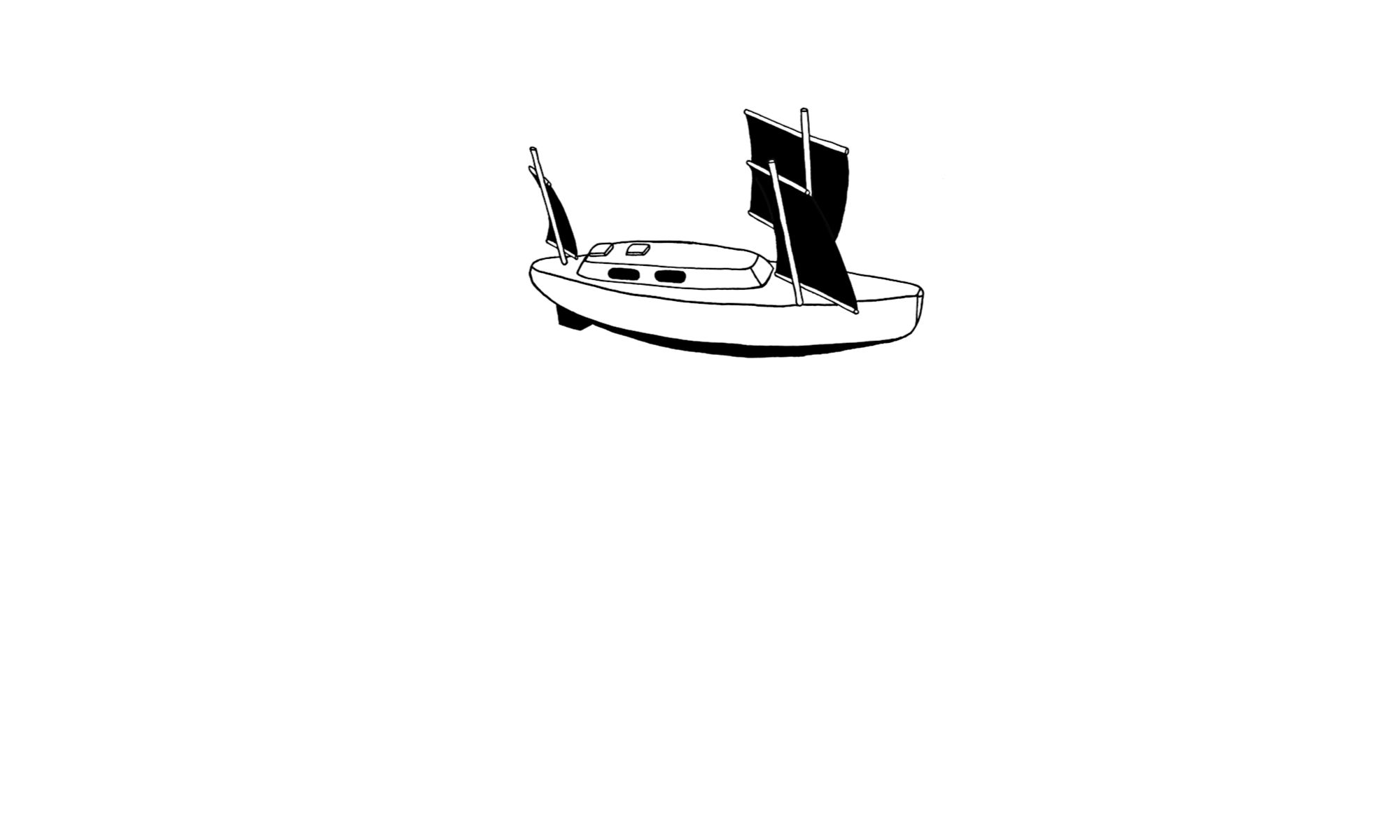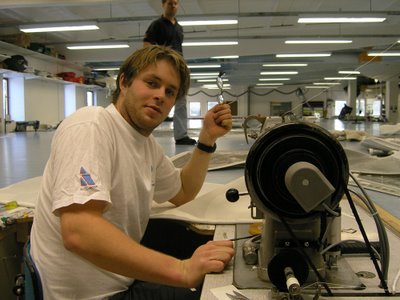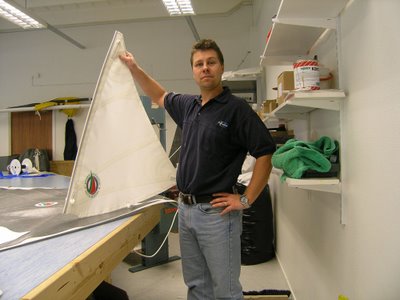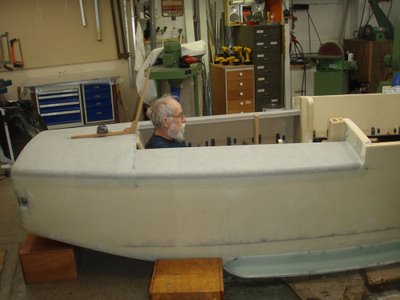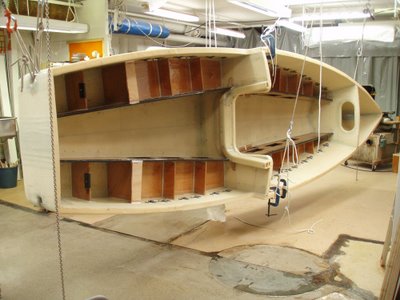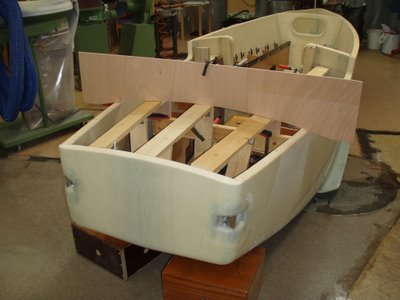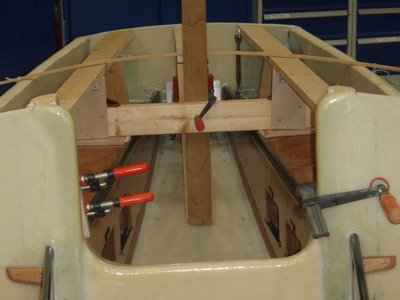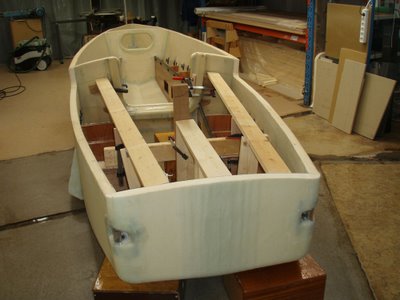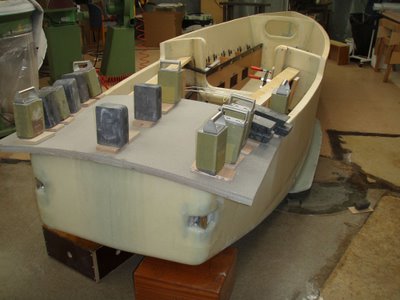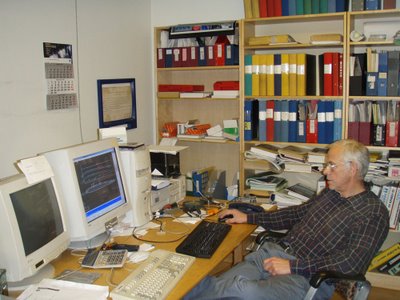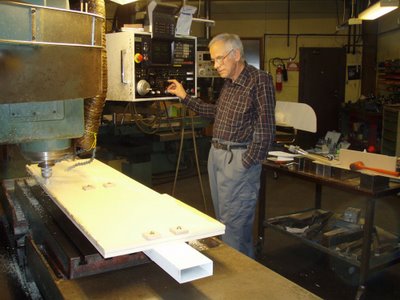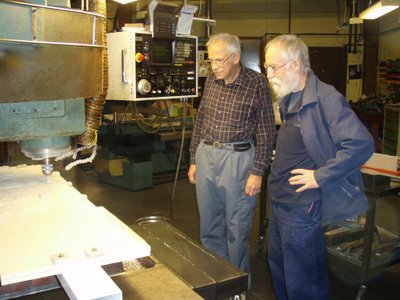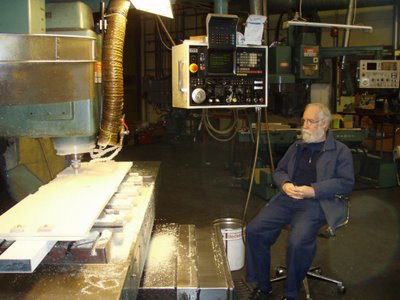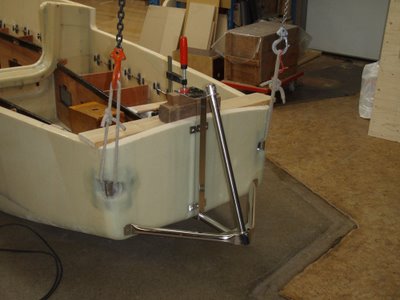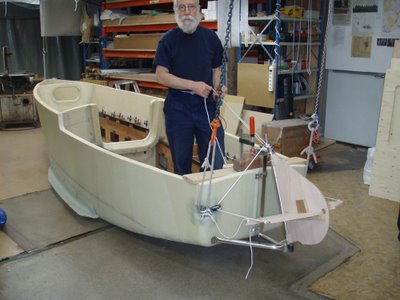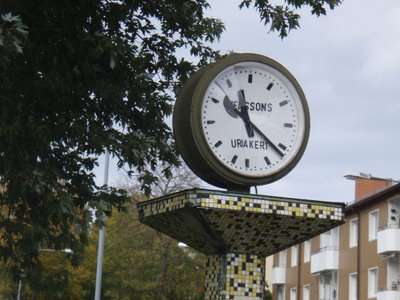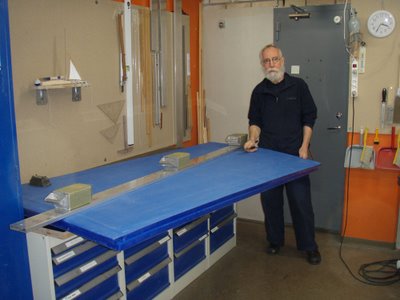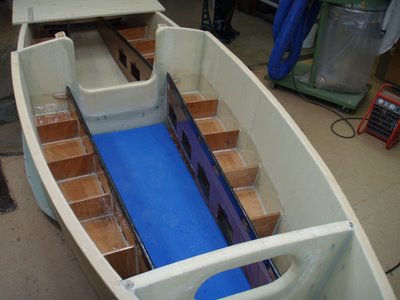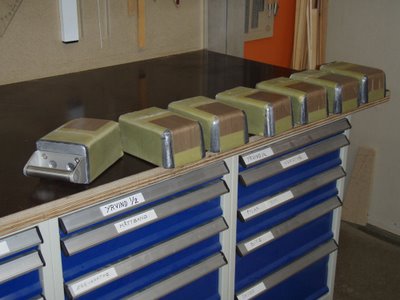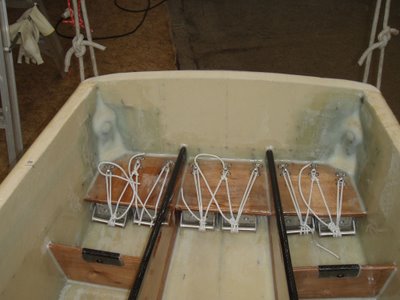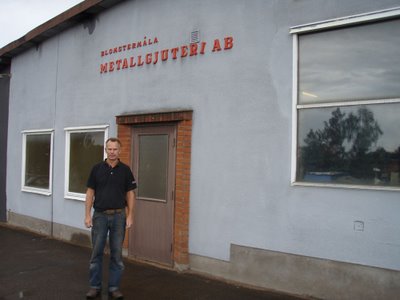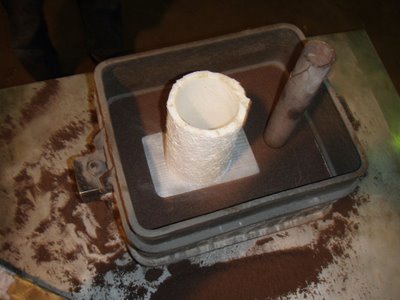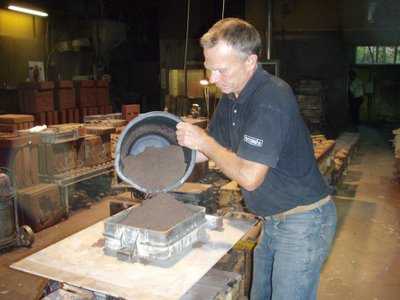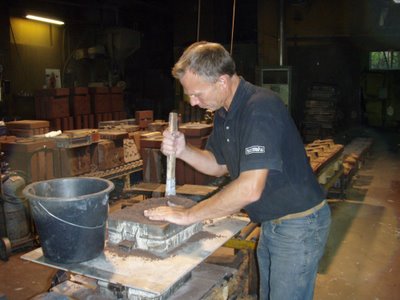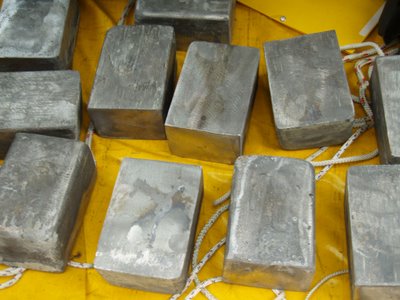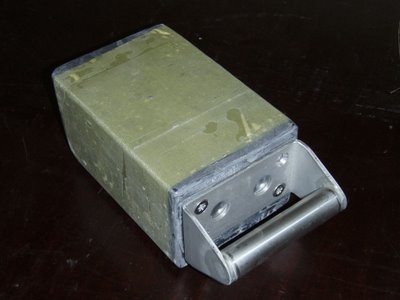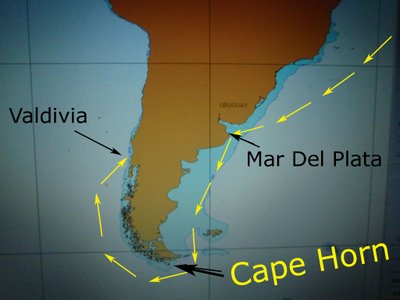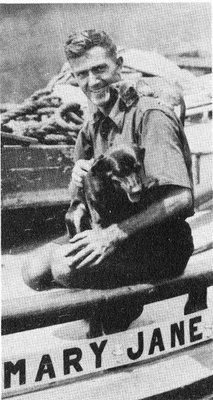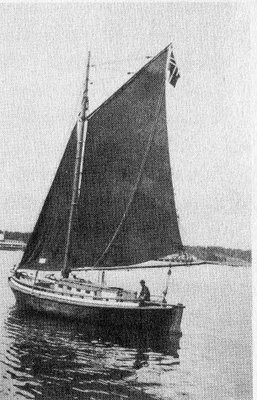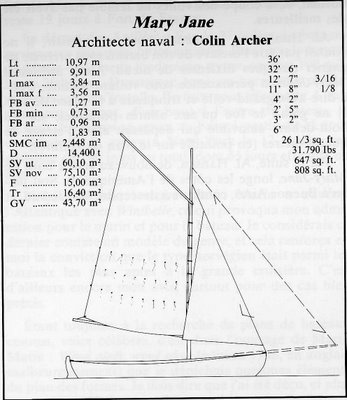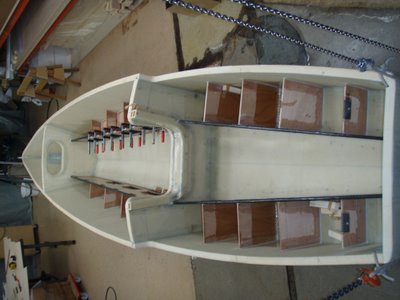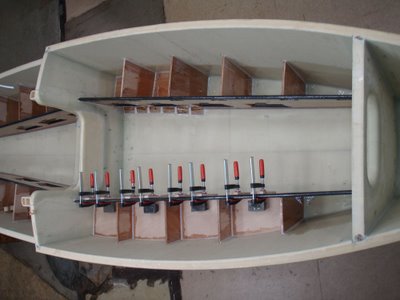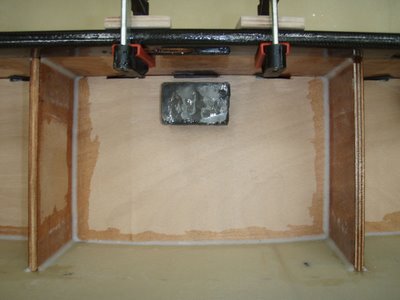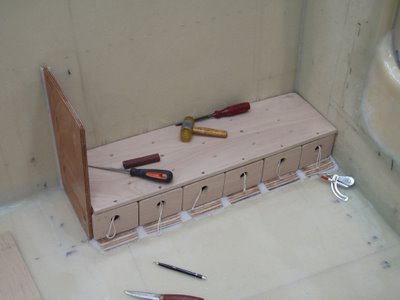My heavy weather ventilation system.
First I put in the two bulkheads.
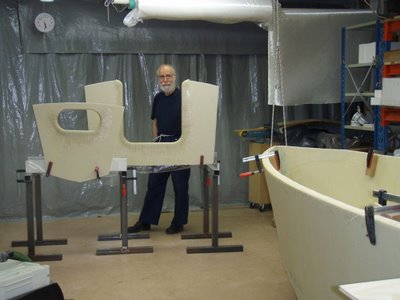
The ventilation channels are built on the main bulkhead.
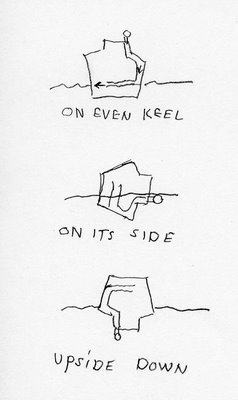
I wish I could draw as well as Matt. As it is you have to do with this. The top picture show the boat on even keel healing 0 degrees. The air comes in from the deck and is ducted in an L-shaped channel down and across the boat.
The middle picture shows the boat heeled 90 degrees. Part of the deck and one ventilator then comes under water. It flows down the channel, but the bottom part of the L is now vertical and the water gets no further.
The bottom picture shows the boat healed 180 degrees. Now the first part of the channel is vertical preventing water from entering the cabin.
This is the fundamental theory. However as air not only have to enter but also leave the cabin two sets of channels is necessary. Also to get distribution of the air the entry and outlet have to be as far away from each other as is practical. Therefore the second channel is an L with an added bend making it an U. With this arrangement air can enter at the bottom of the boat and leave at the top or vice verse. This demands a drain in the bottom of the U were water can be let out in the bilge after an capsize. I use two small carbon pipes.
As there is plenty of wind pressure in a gale my channels have a small section 3 by 4 centimeter roughly equivalent to 1 by 2 inches. Still they are much bigger than my nostrils.
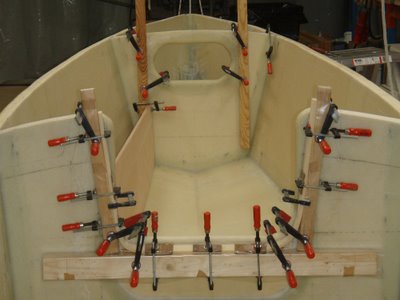
I build the channels of 1 cm divinycell which I edgeglue to the bulkhead.
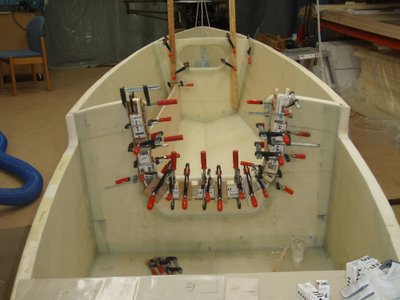
When the first U is done I do the second L. The also function as a seat.
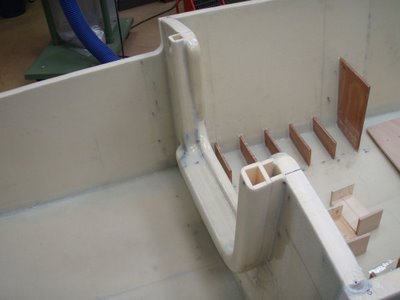
Here the system is seen from above. When the deck house is built I will continue the channels to the top of it.
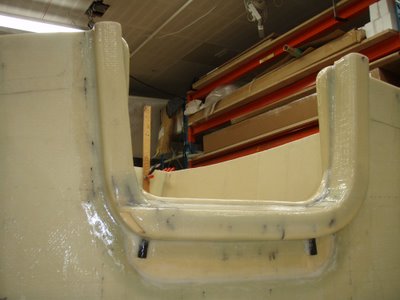
Here is a view from below. The two black carbon drainers can be seen.
Like this:
Like Loading...
